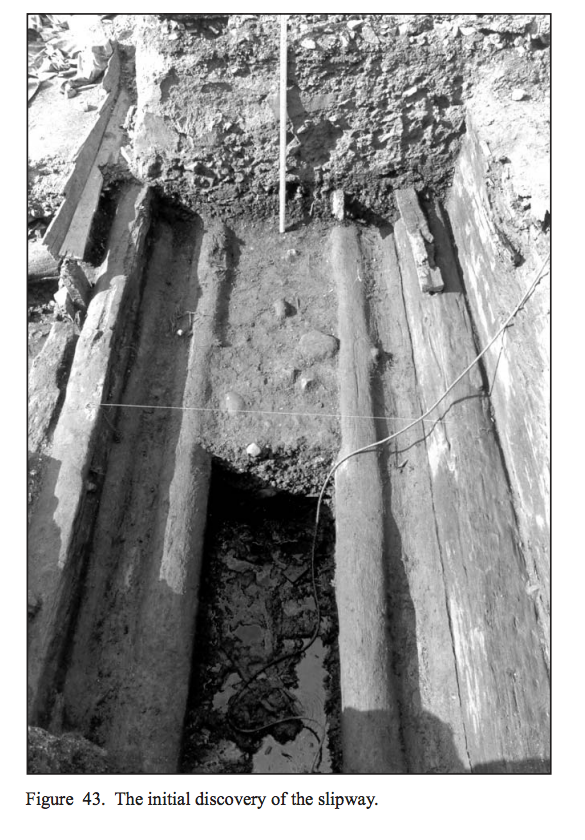Archaeological exploration soon to begin at the south end of West Shipyard
Exploratory archaeology is set to begin – again – at the historic West Shipyard site.
Located beneath what is now a Vine Street parking lot, the site is a rare remnant of Philadelphia’s original shoreline and could contain remnants of city shipping history dating back to the 17th Century.
Thursday morning, the Delaware River Waterfront Corporation hired archaeology firm John Milner Associates, Inc., whose local offices are in Chester, to dig a series of test pits, designed to give an idea of what can be found beneath the asphalt in the southern portion of the site and determine whether a more extensive dig is needed.
This same firm did archaeological work for the city Historical Commission on the northern portion of the site back in the late 1980s, and what was found then was remarkable: A very well preserved wooden ship-way – basically, a ramp on which boats that have just been built or have been repaired were eased down into the water. It is the only known 18th Century ship-way in existence.
In total, starting in July the team will dig no more than six test pits, each seven or eight feet wide and 20 feet deep. One will be at the ship-way site, said DRWC Director of Planning Sarah Thorp. The DRWC hopes the dig will bring many people to the waterfront, the same way the archaeology work at The President’s House attracted many viewers, Thorp said. The ship-way test pit will both help orient people to where they are on the site and “confirm there has not been deterioration over the past 20 years,” she said.
PlanPhilly talked to Philadelphia Archaeological Forum President Doug Mooney about the site last year, when DRWC first announced there would be future digging on the yet-unexplored southern portion of the site in the future.
Mooney said then the site is one-of-a-kind along the east coast and that digging there is likely to turn up evidence of the piers and wharves from centuries ago. Mooney also said artifacts from the Penny Pot Tavern, which stood near Vine Street and the Delaware River in the 1700s and might have been at least partially built on early wharves, may turn up.
The DRWC is required to do archaeological exploration on this city-owned land, which it manages, because the site is on the local historic register.
The contract is for $60,987, and will be paid for with a $25,000-grant DRWC was awarded by the Pennsylvania Historical and Museum Commission and $36,000 from the William Penn Foundation.
“When might it conclude?” DRWC Chairman Donn Scott asked of the dig.
Thorp said if archaeologists worked five days a week, they would likely finish in a month. But because a big goal here is to get groups and individuals to the site and the waterfront, the hours-per-week may be lessened to stretch the project out to as much as two months, to allow more time for tours, she said.
DRWC Board Member Ellen Yin asked if the Independence Seaport Museum might be interested in partnering with DRWC on this dig. Jodi Milkman, DRWC’s vice president for marketing, programming, and corporate partnerships, said the organization will be talking to the museum, which may have an interest in displaying any artifacts that are found.
Thorp said an initial meeting with the consultant to talk about public relations and outreach related to the dig is set for Friday, so more ideas will come from that. “The Seaport Museum is a great suggestion,” Thorp said, pointing out that the museum is working on a fall exhibit of artifacts found during the on-going archaeology PennDOT is doing in conjunction with the expansion of I-95.
Contact the reporter at kgates@planphilly.com
WHYY is your source for fact-based, in-depth journalism and information. As a nonprofit organization, we rely on financial support from readers like you. Please give today.











